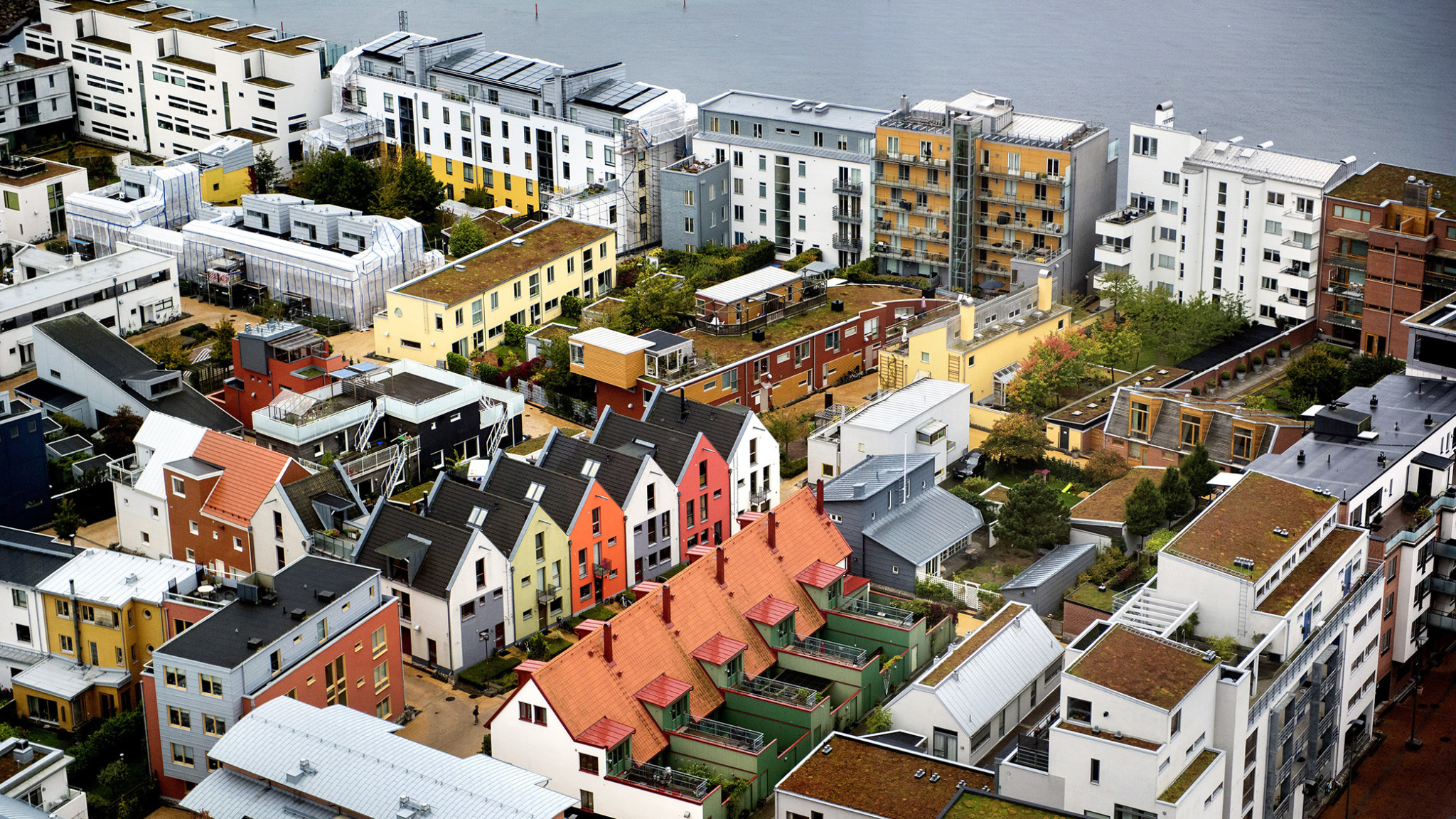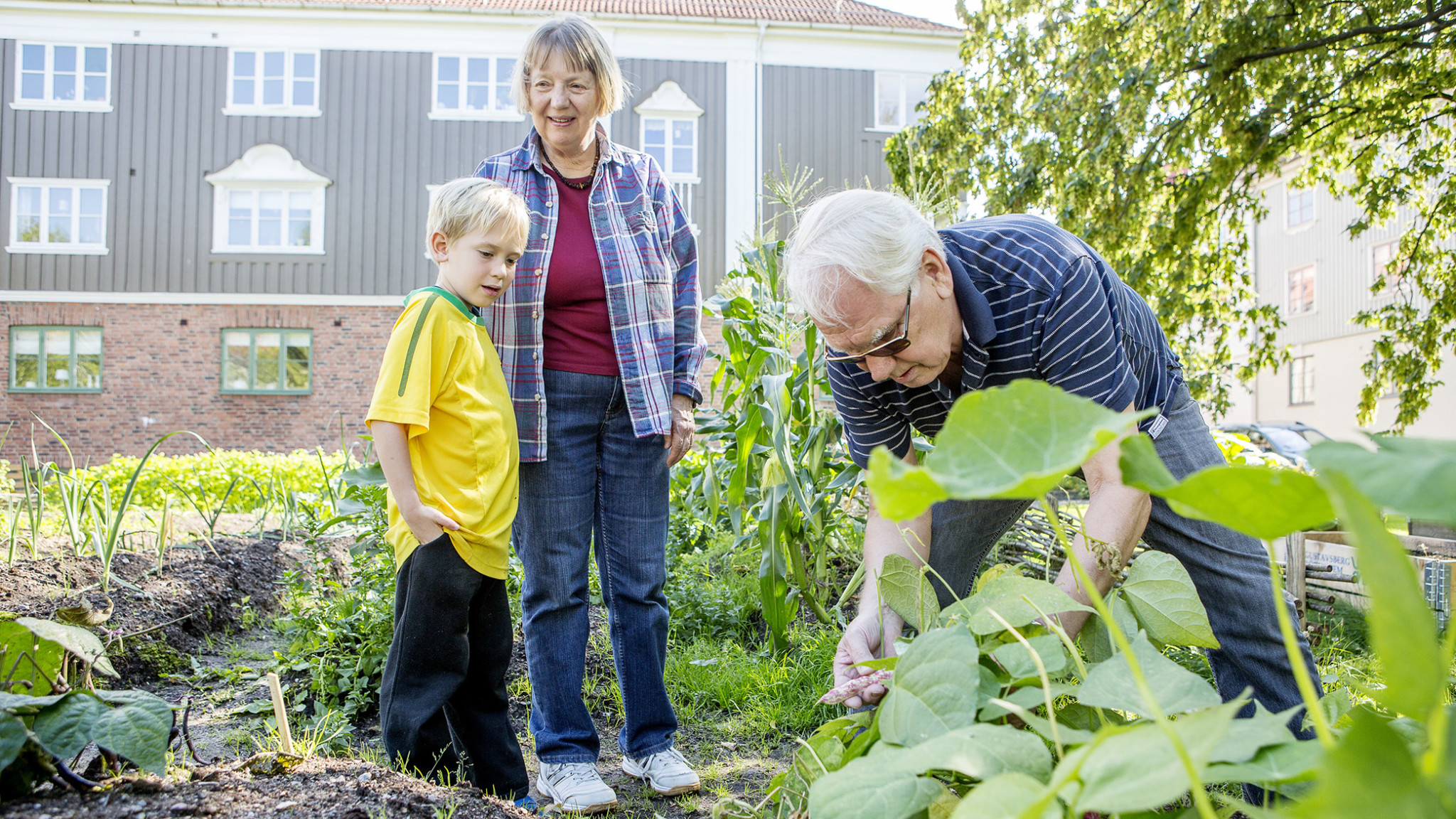Source: sweden.se
Published: June 21, 2016
#1 District heating in Gothenburg
Sweden’s shift from oil to district heating in the early 1990’s is perhaps the single most important factor in explaining the country’s reduced greenhouse gas (GHG) emissions, both in the housing and service sector. Today, district heating accounts for more than 80 per cent of the heat and hot water provided to Sweden’s apartment blocks.
Centralising the way buildings are heated and cooled through a main source means that the central plant can be advanced to use more sustainable and clean forms of fuel. Many district heating networks also make use of recycled heat from industries – energy that would otherwise go to waste.
Gothenburg, Sweden’s second-largest city, boasts a a district heating network which is 1,200 kilometres long and heats 90 per cent of the city’s apartment blocks, along with 12,000 detached homes.
#2 Växjö – as green as it gets?
Back in 1996, Växjö became the first city in the world to set the goal of becoming fossil-fuel free by 2030. Since then, the city has backed up words with actions and is often referred to as ‘Europe’s greenest city’.
Växjö uses a centralised district cooling and heating system, constructs energy efficient buildings with timber wood, and its public transportation runs on biogas and renewables. The city is also about individual action as it promotes cycling as a transportation alternative, and encourages urban gardening in Östrabobacken, right in the city centre.
In 2014, Växjö in southern Sweden had 2.4m tonnes of CO2 emissions per capita – significantly less than the EU average of 7.3 that year.
The key to Växjö’s achievements in reducing CO2 emissions is that more than 90 per cent of the energy used for heating in the city, and about half its electricity, comes from trees. Waste from the local forest industry – branches, bark and sawdust – is burned to generate heat and power.

Västra Hamnen, once a decaying industrial area, has been transformed into a carbon-neutral neighbourhood – a prime example of sustainable city planning. Photo: Aline Lessner/www.imagebank.sweden.se
#3 Progressive Malmö
Malmö and its surrounding region continue to proactively combat climate change through innovative and forward-thinking sustainability initiatives:
Västra Hamnen (‘Western Harbour’) is a mix of modern architecture and ecological sustainability, and is often cited as Europe’s first carbon-neutral neighbourhood. This former shipyard has implemented a smart heating and cooling system which runs entirely on renewable energy. The district also has an innovative waste management system using vacuum suction to transport household waste into a central tank underground. This way, dustcarts don’t have to drive through residential areas. The food waste is then collected and converted into biogas to fuel public transportation.
Augustenborg is one of the largest investments in Europe in the ecological conversion of an existing residential area. In 2010, it was awarded the United Nations (UN) World Habitat Award for its 10,000 green roofs which slow down flooding by absorbing rainwater. The district has also implemented a large solar energy project where photovoltaic solar panels have been installed on both public and private buildings to harness energy. Also, over 70 per cent of waste collected is recycled in Augustenborg.
The district of Hyllie is developed as the Öresund Region’s climate-smartest district. The goal is to have this emerging neighbourhood 100 per cent fuelled by renewable and recycled energy by 2020. Among other things, Hyllie is developing a sustainable energy system that will integrate electricity, heating and cooling – while building a smart consumption monitoring solution where residents will be able to track and measure their environmental impact.
Click here to watch “Sustainable Ålidhem wins the Sustainable Energy Europe Award 2013”: https://youtu.be/qZPrzeLnEA4
#4 Energy-efficient Umeå
A major fire in Umeå’s Ålidhem district in 2008 prompted the city to start building more energy-efficient buildings through its Sustainable Ålidhem revitalisation project.
Some 400 residential apartments – built in the 1960s and 1970s – have been refurbished with the goal of reducing their energy consumption by 50 per cent.
137 new apartments, which consume 50 per cent less energy, have been added while photovoltaic cells were built on the roofs to harness solar energy. Echologs – terminals for displaying and monitoring electricity, heat, and water consumption – were installed in each apartment.
The project went on to win the 2013 Sustainable Energy Europe Award in the ‘Living’ category.

Urban gardening at Majorna in Göteborg. Photo: Emelie Asplund/imagebank.sweden.se
#5 Sustainability through urban farming
Urban farming in allotment gardens has long been a popular pastime among Swedes, in many corners of the country. Residents share a piece of land cultivated into gardens where they grow fruits and vegetables. Koloniträdgårdförbundet (the Association of Allotment Gardens) oversees this initiative. The 100 year-old organisation represents over 25,000 members and 260 member organisations, including urban farmers and gardening collectives.
#6 Preserving bees and butterflies
Private beekeeping has been spurred on by the global news that bees are disappearing. Svenska Bin and Bee Urban provide beehives, biodiversity gardens, and pollination habitats in urban settings.
Pollinating insects are vital for human survival, with a countless number of plants and plant products eaten by humans dependent on bee pollination. Bees are also essential to the ecosystem as they cross-pollinate flora – plants and vegetation – which in turn purify the air we breathe.
Butterflies, sensitive to environmental changes, are research indicators for ecologists studying the effect of climate and ecosystem changes.
In Stockholm suburb Huddinge, URBIO has converted the roof of a five-floor hospital parking garage into an eco-paradise for butterflies – naturally abundant in the area. The ‘Butterfly’s Roof and Nectar Restaurant’ (Fjärilstak och nektarrestaurang) is a series of rooftop fields, with meadow seed mixtures and nectar flower gardens, to help promote the repopulation of butterflies.
Click here to watch “Bee Urban – #SST12”: https://vimeo.com/39984292
#7 Powering buildings through body heat
The concept behind ‘passive houses’ reduces energy consumption by building low-energy residences which power themselves through the use of energy from people’s body heat, electrical appliances and sunlight. Passive houses have been built in a number of communities in Sweden.
In Helsingborg in southern Sweden, Väla Gård is a collection of solar-powered office buildings and conference rooms that are also passive-energy efficient. Completed in 2012, it has air-purifying plant walls, produces more energy than it consumes and has the highest platinum level LEED certification for green buildings.
The geothermal system in place at Stockholm’s Central Station (top picture) captures body heat from over 250,000 daily commuters. The heat is sourced into water via a heat regulator and the heated water is then pumped into the nearby Kungsbrohuset to provide heating. The cooling of the building is provided by water from the nearby Klara Lake, making maximum use of the surrounding environment.
